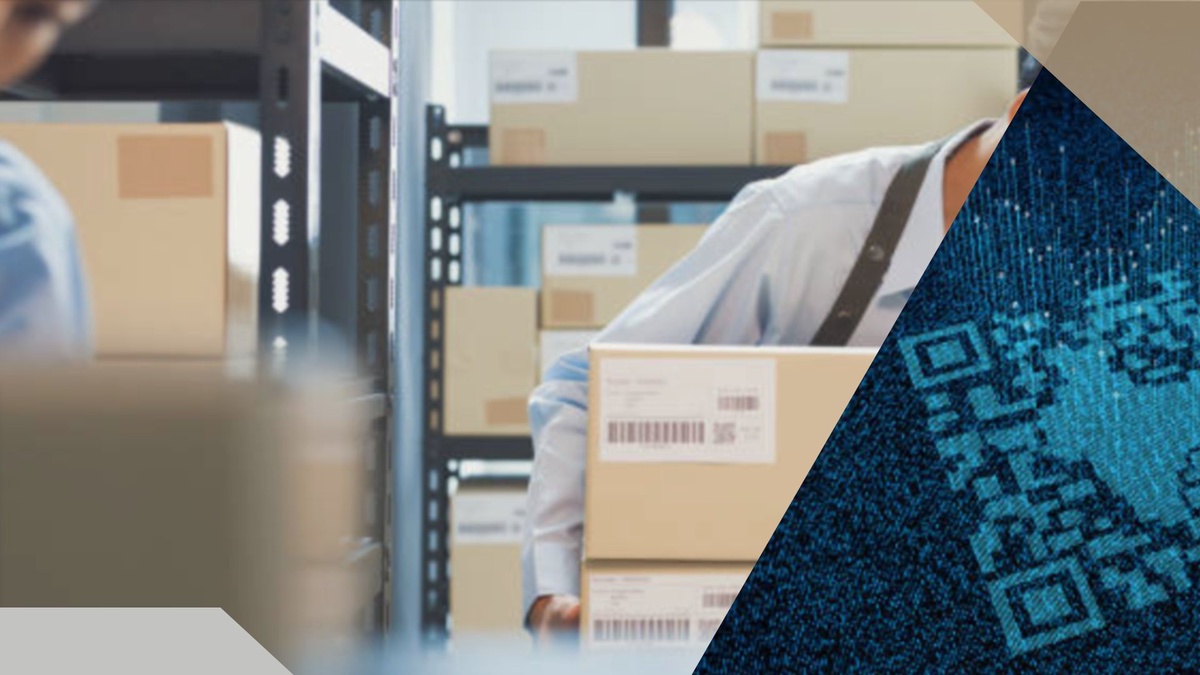The global logistics market size accounted for USD 7.98 trillion in 2022, and it is expected to be worth around USD 18.23 trillion by 2030, with a noteworthy CAGR of 10.7% from 2023 to 2030.
Such a vast industry demanding high precision cannot be managed manually. It requires advanced methods to handle the various processes within logistics, one of the most demanding being shipment tracking. Shipment tracking ensures that the product arrives on time and adheres to all safety measures for timely and safe delivery.
What is a shipment barcode?
A shipment barcode is a barcode that identifies and tracks a package as it moves along the supply chain. These barcodes contain various information, such as the destination address, tracking details, and other vital information. Some common barcode types used in shipment tracking are UPC, EAN, Code-128, and PDF417.
They are affixed to the package when it is prepared for shipping, whether from a manufacturing unit to a third-party logistics (3PL) warehouse or from a 3PL warehouse to the end consumer.
How do shipping barcodes work?
Shipping barcodes encode information that a shipping label scanner can read. When scanned, the barcode decodes the data into digital codes for the system to understand. This information is then transmitted to a central system that updates the package's location in real time.
Types of Shipping Barcodes
The shipping industry employs various barcode types, including:
- UPC/EAN Codes: These are the most used barcodes in the shipping industry, encoding details like product type and manufacturer information.
- Code 128 Barcodes: These versatile barcodes can encode many alphanumeric characters and are widely used in the shipping industry.
- QR Codes: These relatively newer codes can hold more data and be quickly scanned using smartphones and other mobile devices.
- Datamatrix Barcodes: They are like QR codes but are more compact and printed on smaller labels, making them useful for shipping small packages.
- PDF417 – These barcodes have high data storage capacity, making them highly suitable for the shipping industry.
Use Cases of Barcode Readers in Shipment Tracking
Shipping barcode readers are crucial in the shipping industry to ensure timely deliveries. They are used to track packages in real-time at various checkpoints.
Diverting Parcels to the Correct Location
Shipping parcels demand high accuracy. If a package is mistakenly shipped to the wrong location, it can cause delays, additional efforts, and significant troubles rerouting it to the correct destination. By using shipping barcode scanners, the logistics team can scan the shipping barcode at various checkpoints to obtain its destination address and ensure that parcels are routed to the correct address without any mistakes.
Sending Real-Time Updates to Customers
With e-commerce advancing, customers expect real-time updates about their parcel deliveries. Shipping barcodes help logistics teams scan the shipping barcodes at various checkpoints throughout their journey. These real-time updates are saved in a centralized system. From this centralized location, the IT team can send automated real-time updates to the customers regarding the whereabouts of their parcels.
Initiating Returns in Case of Product Recalls
Suppose a manufacturer detects a manufacturing defect in any of the batches. In that case, they can check the current location using the centralized system and immediately halt the package, initiating its return to the manufacturing unit. The logistics team can use shipping barcode scanners to scan all parcels and begin the return of the defective batch.
Retracting Products in Case of Purchase Cancellation
The logistics team receives a notification when a customer initiates a product cancellation. The team members use the shipping barcode reader to read the real-time location of the parcel in the centralized system. The barcode of the canceled product request can be scanned, and the team can access its real-time details to prevent further shipping and return the product to the origin.
Sorting Packages in Inventory or Vehicles Based on Delivery Address
If a carrier vehicle carries multiple parcels for various locations, it makes sense to load the vehicle based on the route map. Packages for the last destinations should be loaded first; similarly, parcels for the first should be loaded last. This makes it easier for the delivery person to unload the parcels at their destinations. While loading the parcels in the vehicle, the team can scan the barcode and sort them based on their destination.
Conclusion
Shipping barcode readers can be a game-changer for the logistics industry. They provide real-time updates about shipped packages, which can enhance the customer experience by providing real-time updates about their purchases. Additionally, they prove highly useful during product recalls or product cancellations. Knowing the exact location of parcels is a boon for the shipping industry.


No comments yet